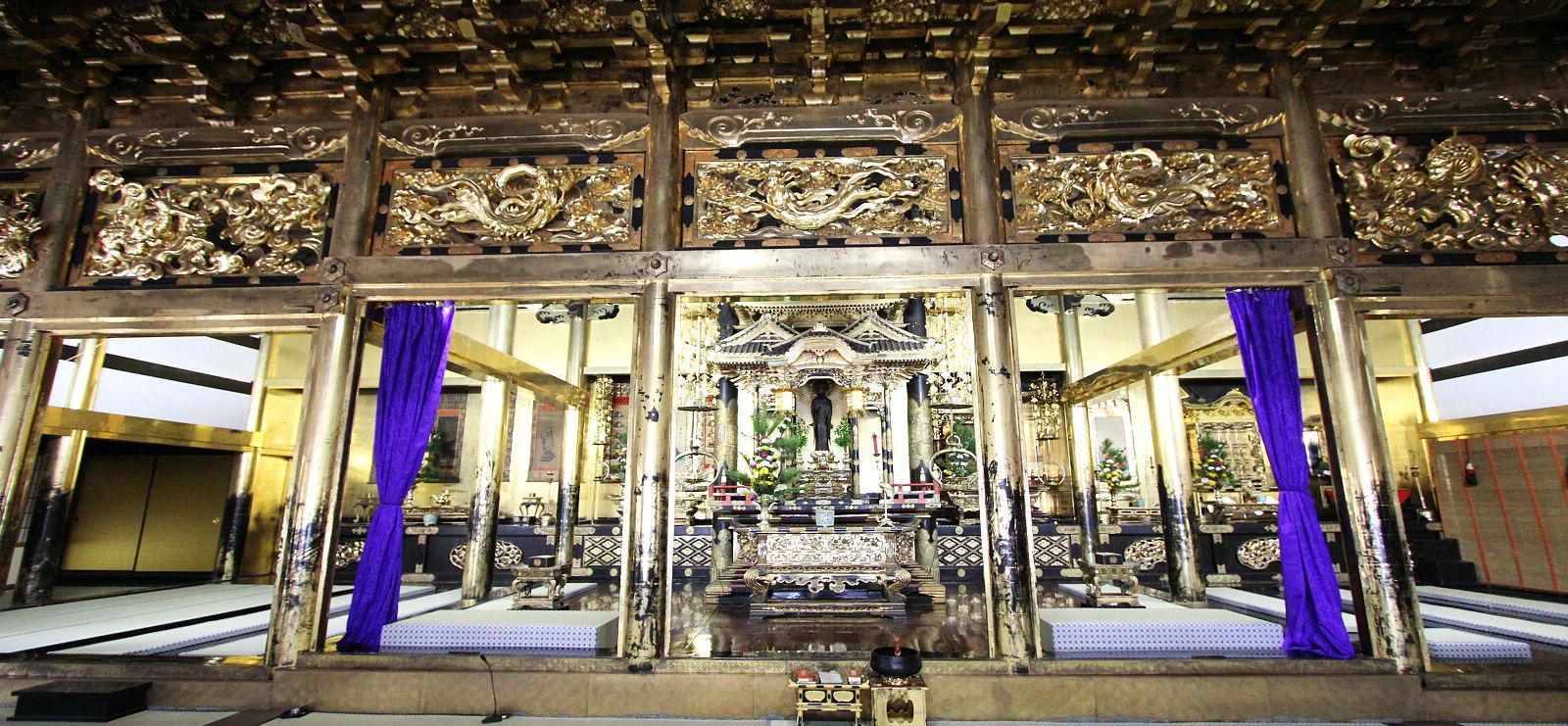
Temples have been the spiritual and economic heart of Nanto for centuries. The Hokuriku region is the chief stronghold of the True Pure Land school of Buddhism, and two of its most important temples are right here.
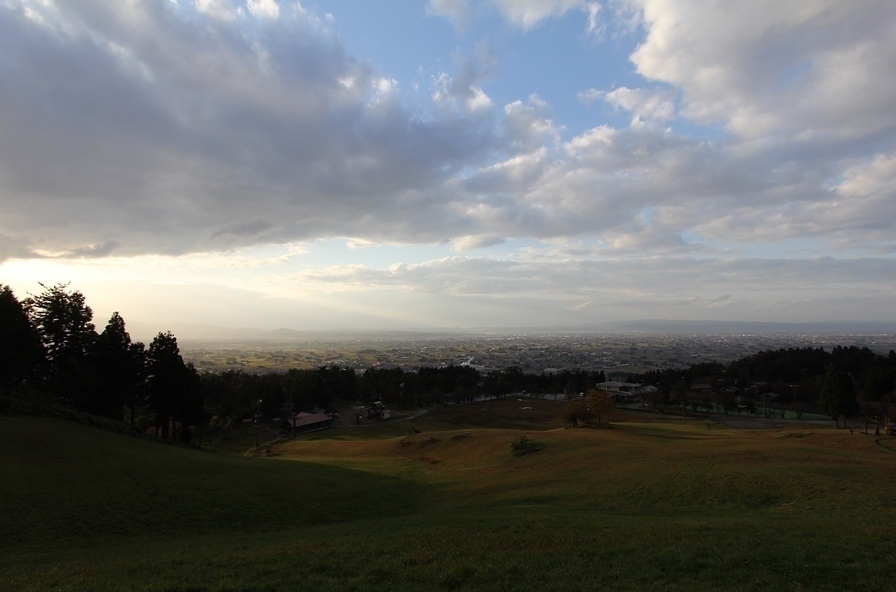
The town from above. Substantial farmhouses are dotted among rice paddies.
Zuisenji, in Inami-machi, was founded way back in 1390, but the buildings were unfortunately destroyed by repeated fires.
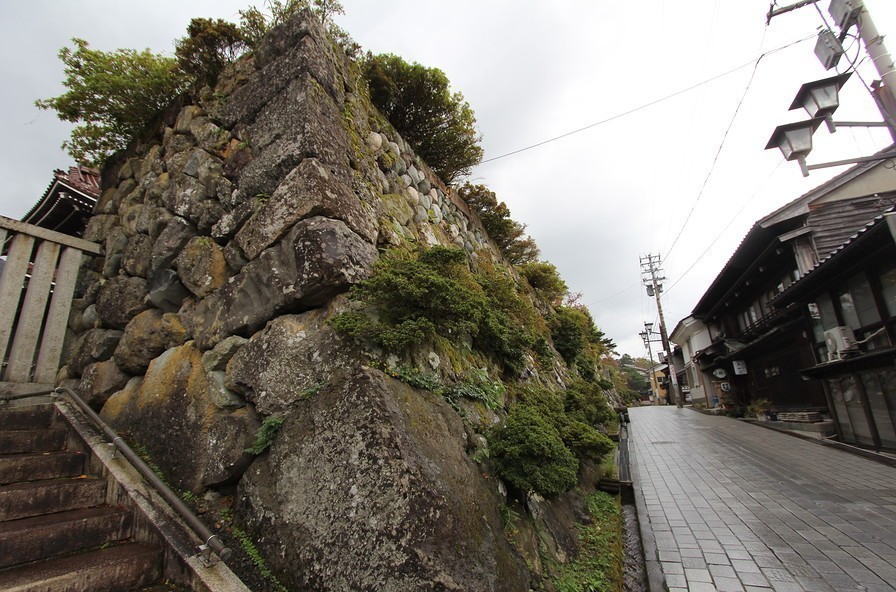
The walls of Zuisenji. When local lords were prohibited from building castles, they cunningly started fortifying temples instead.
The oldest remaining structure is the main gate, built in 1801 by carpenters from Kyoto.
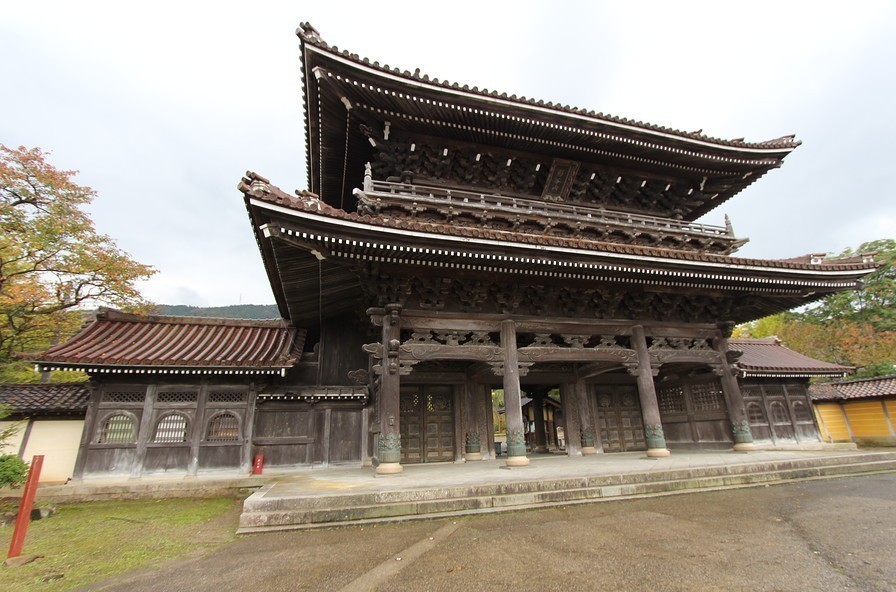
It is huge!
It is intricately carved on both sides with animals, mythical characters, and geometrical patterns. Inami’s first woodcarvers are said to have learned their trade from the Kyoto craftsmen while working on this gate, and the new industry took off rapidly.
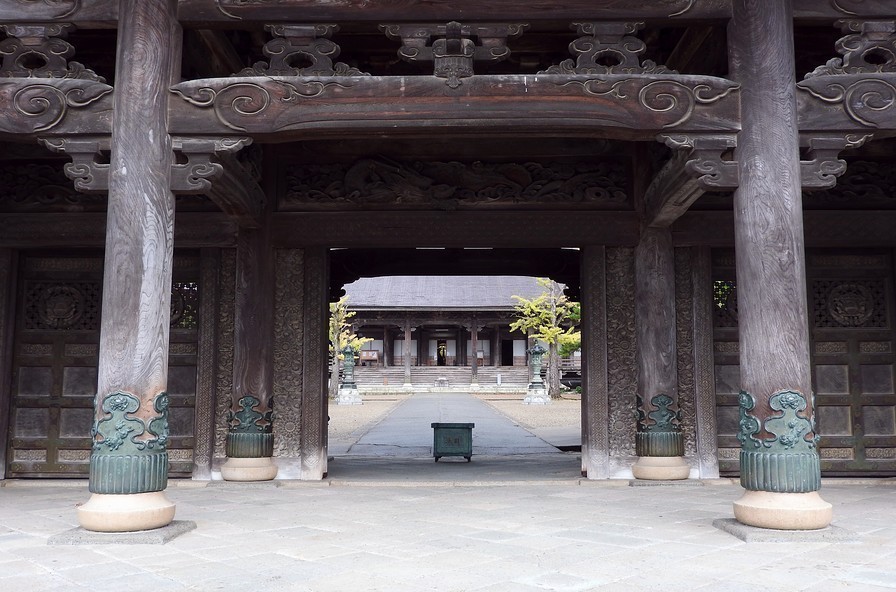
According to local legend, the dragon carved above the entrance once came alive to put out a fire that threatened to destroy the temple yet again
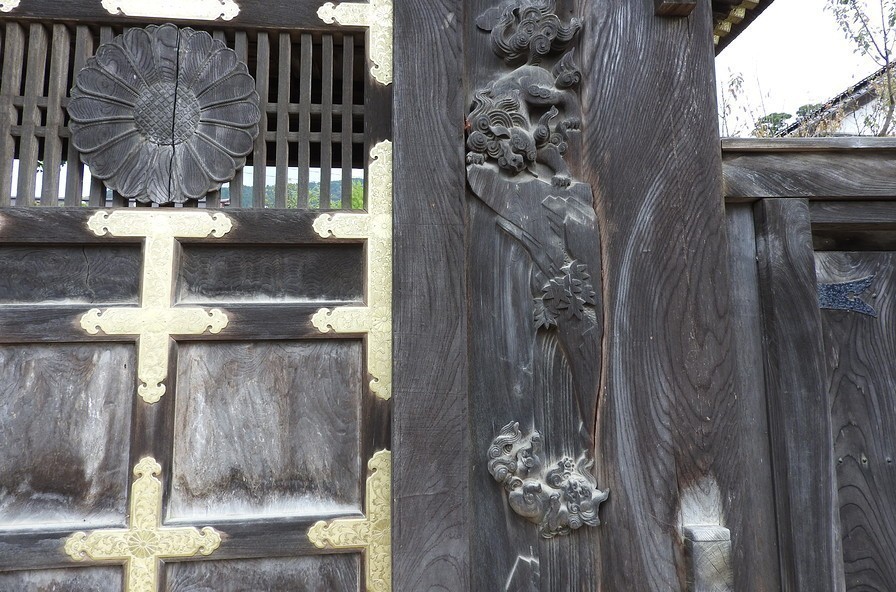
A lion-dog deliberately throws its young into a ravine to test their strength
As my local guide told me, this is “the home of faith and woodcarving”. There are now over 100 woodcarving studios in the town, supplying carvings for temples, festival floats, and private homes, as well as producing more conceptual works. I visited one to watch a master artisan at work.
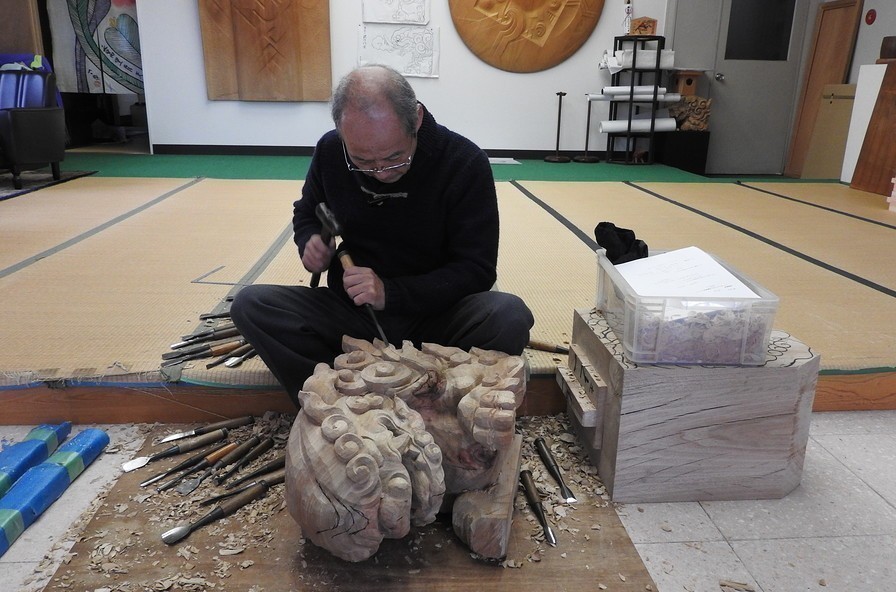
Nagata-san works from his own designs
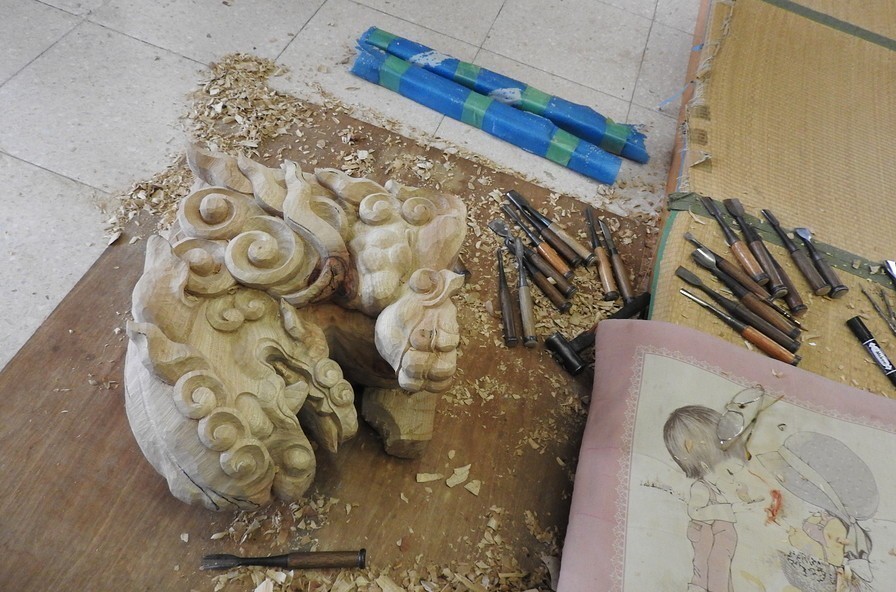
The set of six gables for a temple porch will take him the rest of the year to complete
There are so many woodcarvers here that almost everything in the town is carved, from shop signs to bus stops. An international woodcarving camp, held every four years, draws craftsmen from around the world.
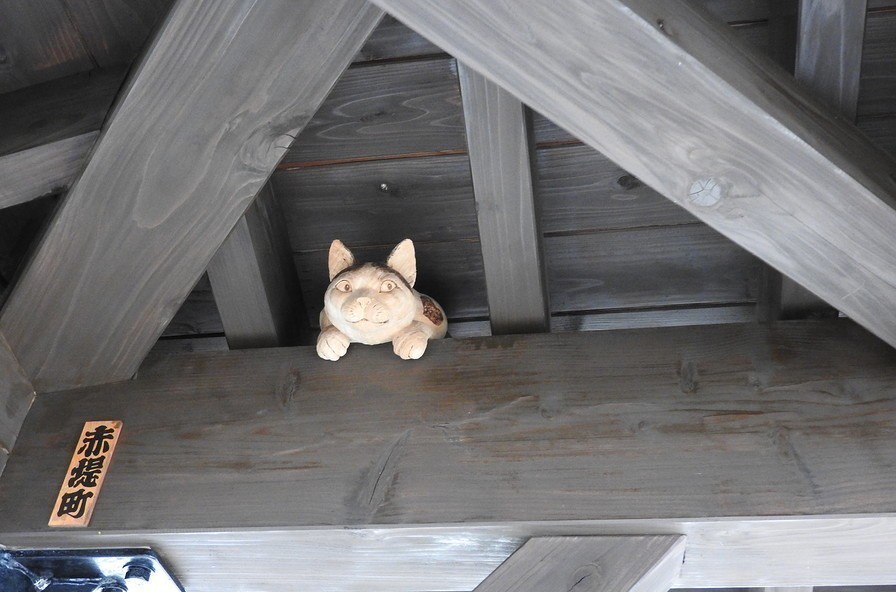
A cat hides in the rafters of a bus shelter
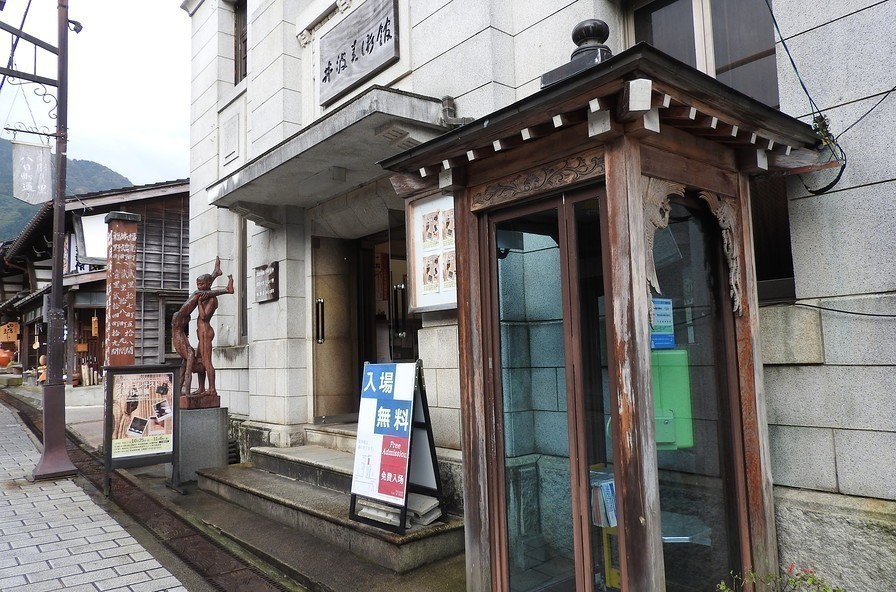
Even the phone boxes are carved!
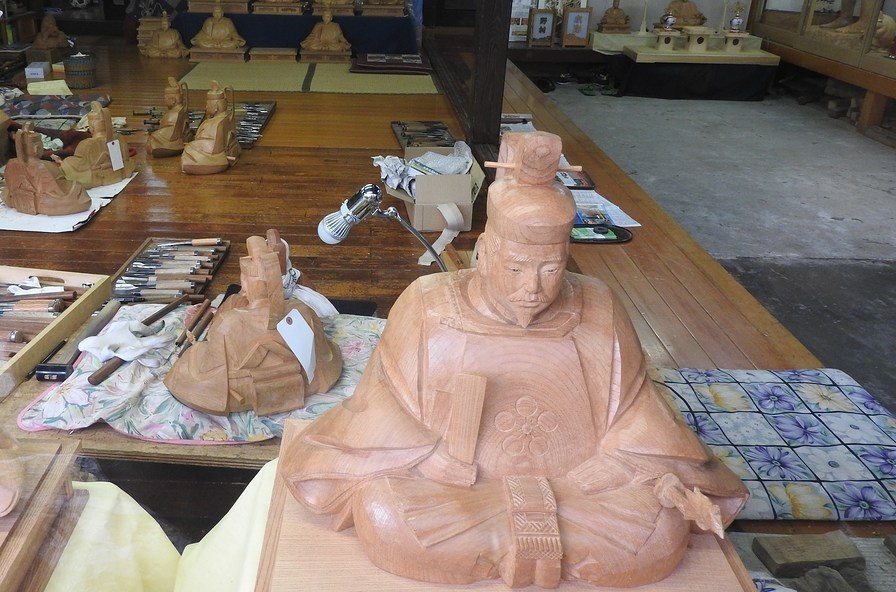
Wooden statues of Sugiwara no Michizane, the god of learning, are given to young boys
Nearby Johana-machi is home to another major temple, Zentokuji. The temple’s history goes back over 500 years, and it also houses many splendid carvings. Twice-daily services, a rarity for temples nowadays, continue to attract worshippers.
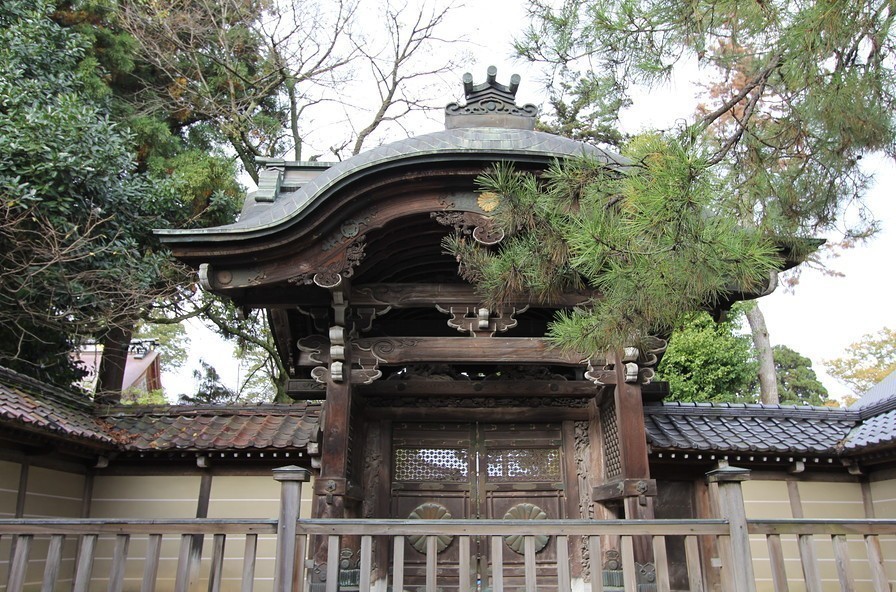
This gate is for aristocracy only
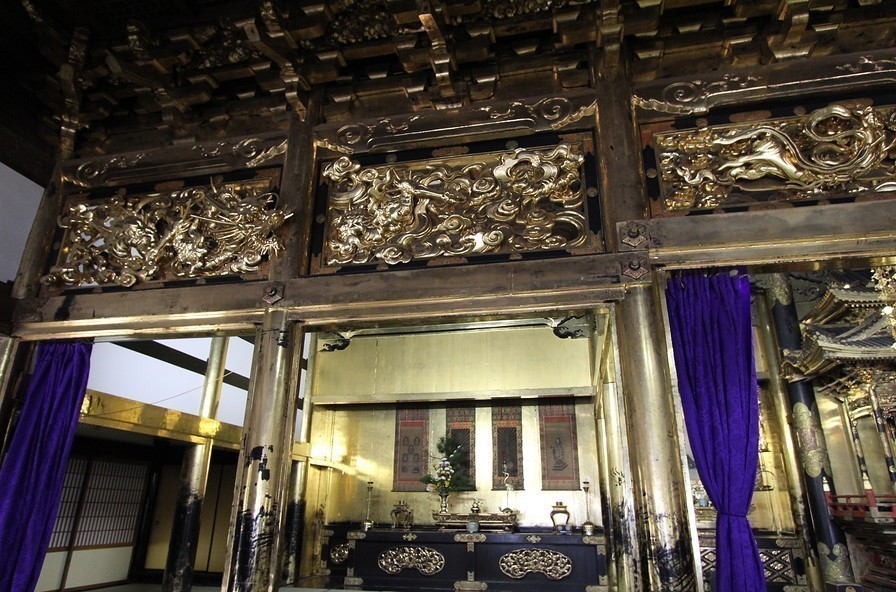
There are fearsome dragons on either side of the main altar
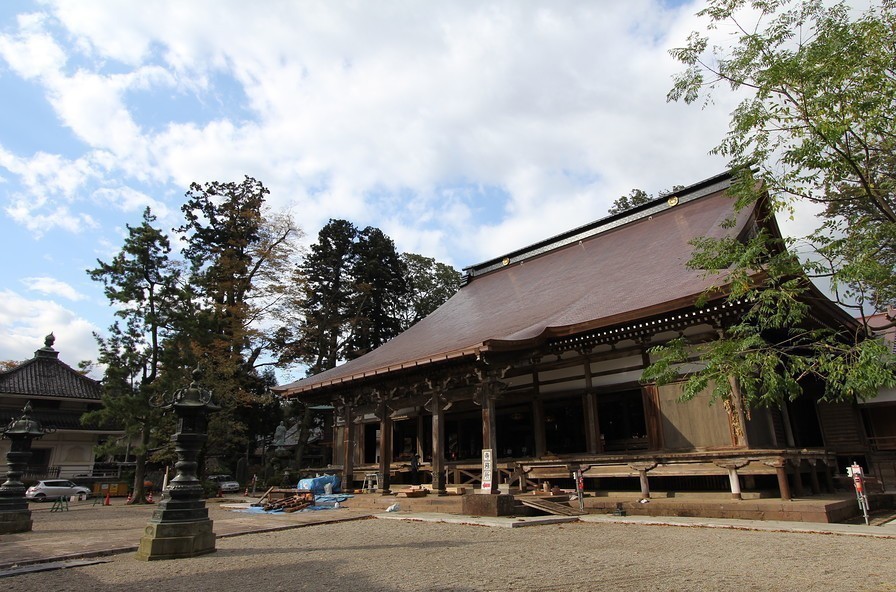
The temple is currently being restored, so the woodworking tradition continues
In past centuries, temples were economic magnets, with markets held in front of the gates to serve visitors from far and near. The town’s leading merchants became extremely wealthy as a result.
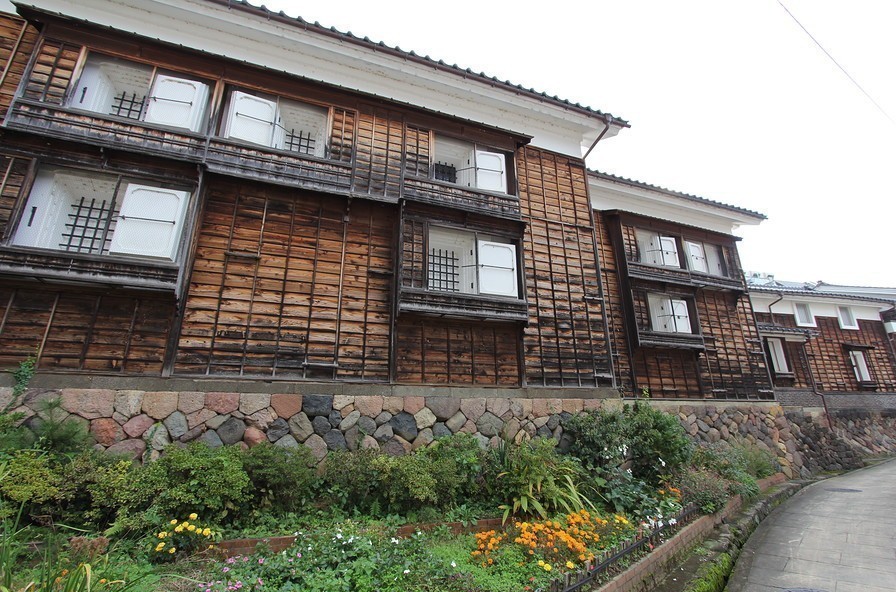
This row of storehouses all belonged to one merchant
This prosperity is manifest in the gorgeously carved and gold-plated floats pulled through the town in the Hikiyama Festival each May. The rest of the year, some of the floats and carriages for the musicians are on display in the Hikiyama Hall.
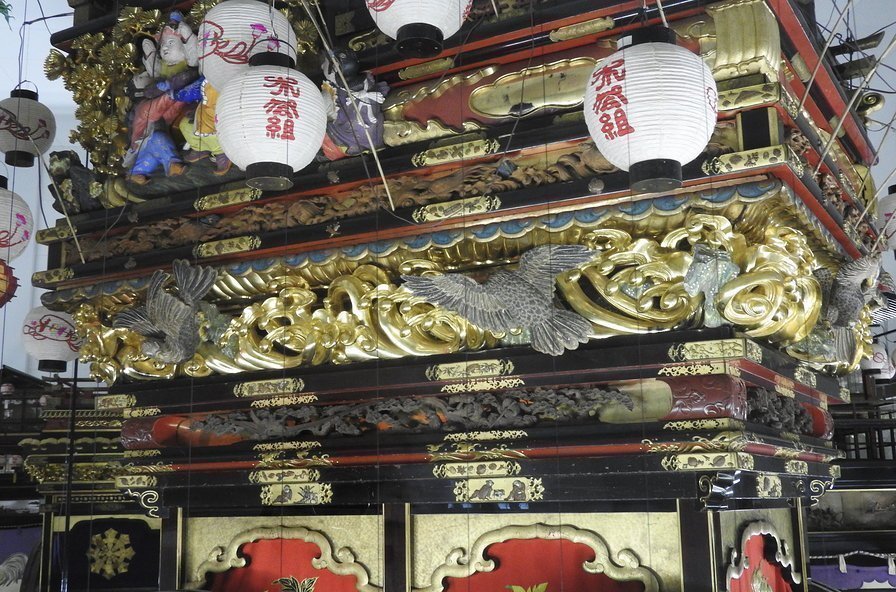
The lifelike birds of prey appear poised to take flight
The temple traffic, along with silkworm cultivation in the nearby mountains, also gave birth to a thriving silk industry in Johana. Today, one working factory remains, Matsui Silk Weaving.
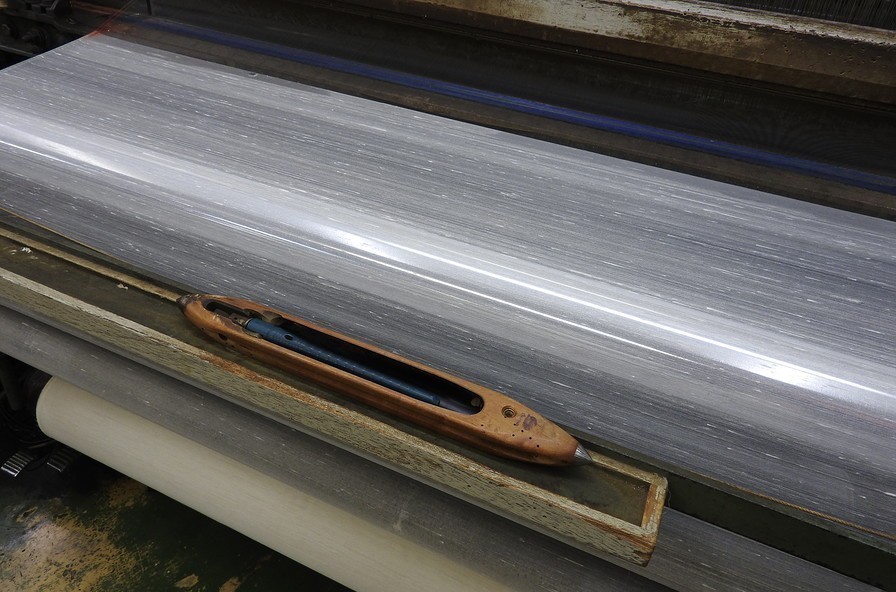
Their thread combines silk from two different sources, producing a fabric with varying textures
Their silk was once used to cover sliding doors, but as fashions have changed they have developed innovative new products including blinds and wedding stationery.
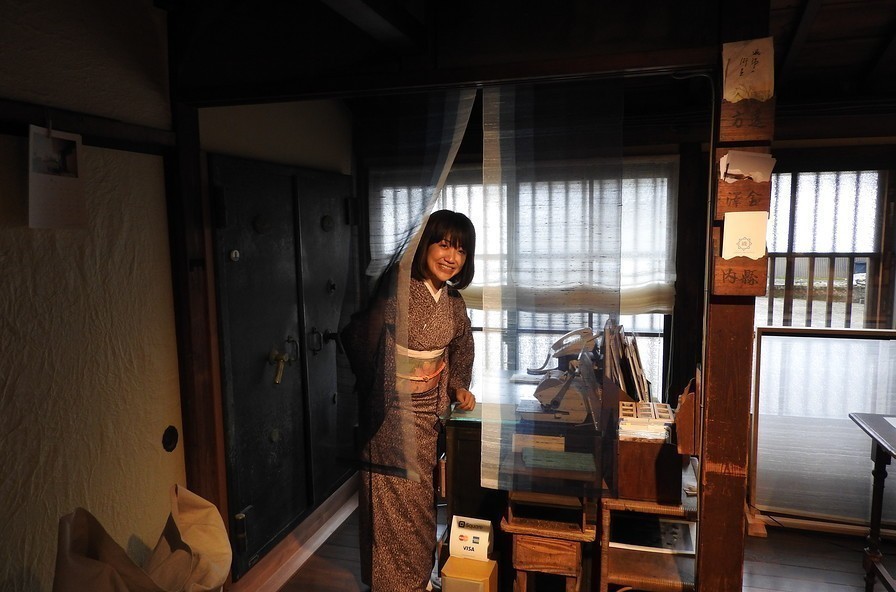
Matsui-san shows off this incredible translucent curtain. I love it!
The combination of a creative tradition and wealth have continued to attract artists to Johana. Renowned woodblock printmaker Munakata Shiko lived here for five years, and his works are still displayed throughout the town, including at Kayasyo, the buckwheat noodle restaurant where we ate lunch!
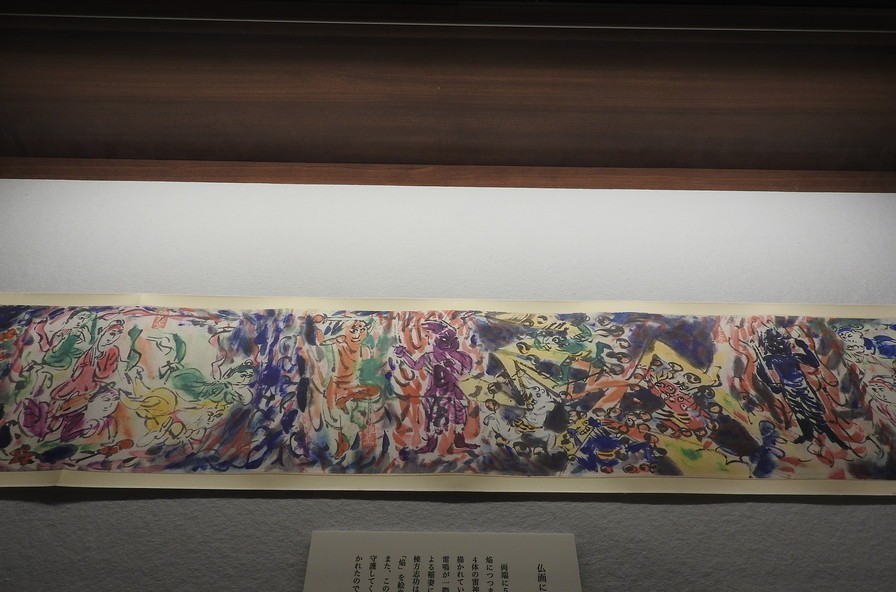
Buddhist themes are central to Munakata’s work
The deeply held Buddhist faith of the area, along with its woodcarving expertise, are evident even at Kominka no Yado Okabe, the inn where I’m staying. Once the home of a person of status, it was used for religious ceremonies by the inhabitants of this mountain village, which has no temple. As such, its Buddhist altar is particularly ornate.
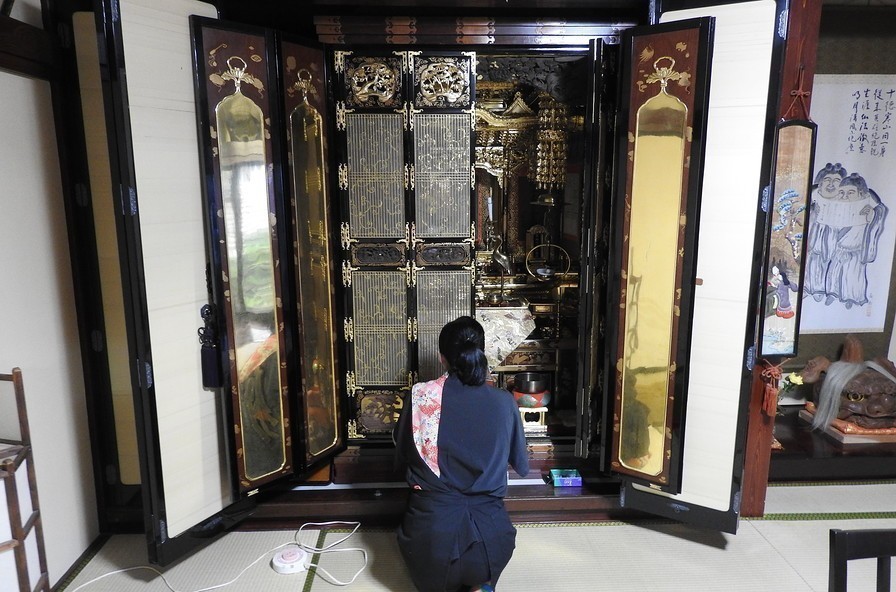
This altar cost the equivalent of a house a century ago; and with its lacquer, coral, mother of pearl inlay, and intricate gold-plated carving, I can see why
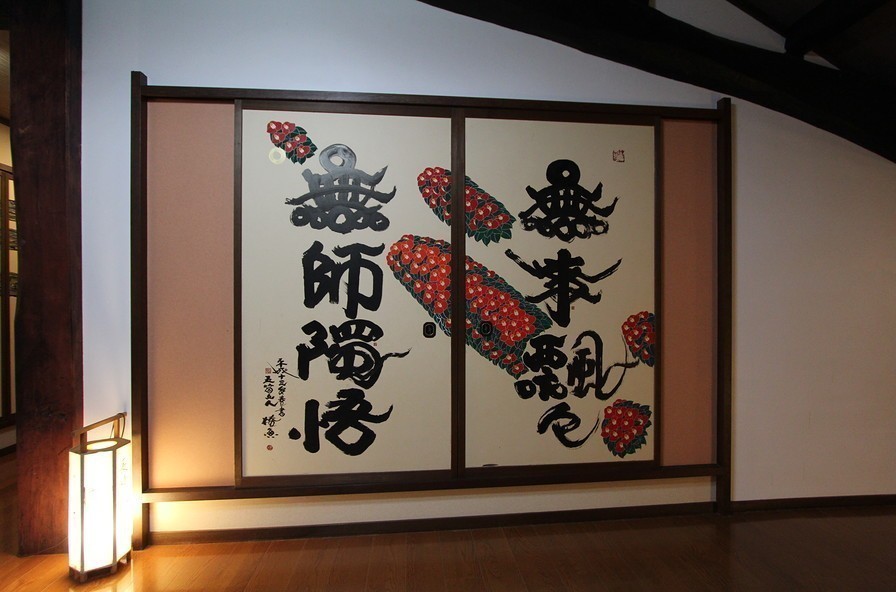
But I also love the bold paintings by Izumi Chingyo, a writer and artist who lived nearby and came here daily to use the bath
Tomorrow, I head to my final destination, Itoigawa, to learn more about rural life.
 One of the largest online hotel and ryokan booking sites in Japan
One of the largest online hotel and ryokan booking sites in Japan
